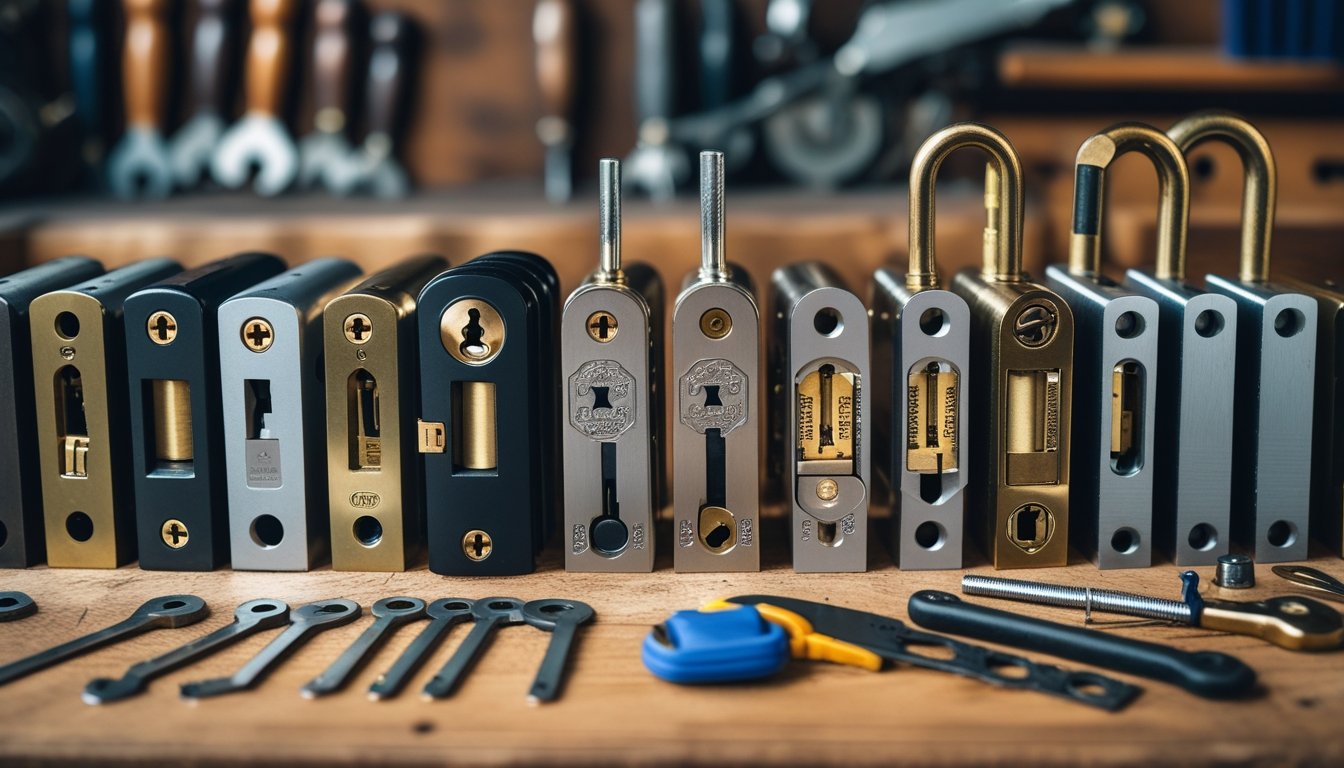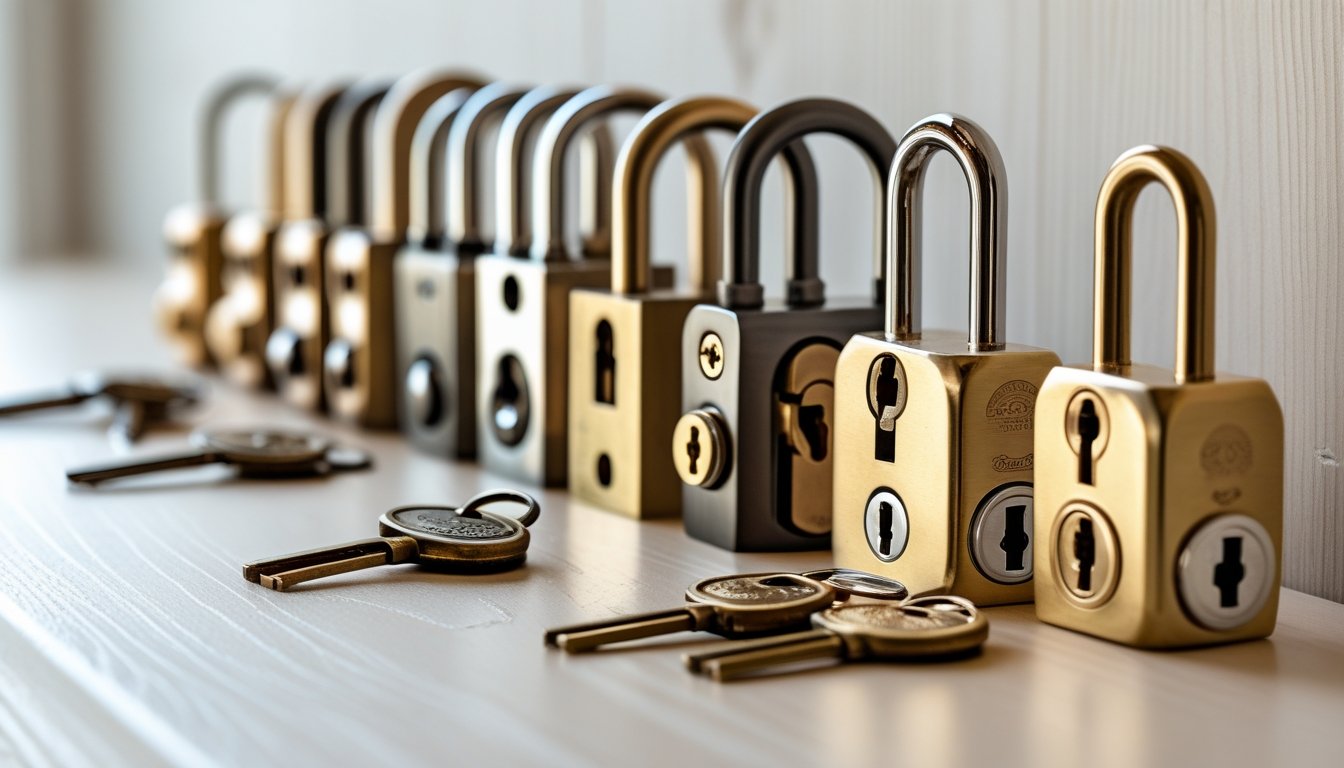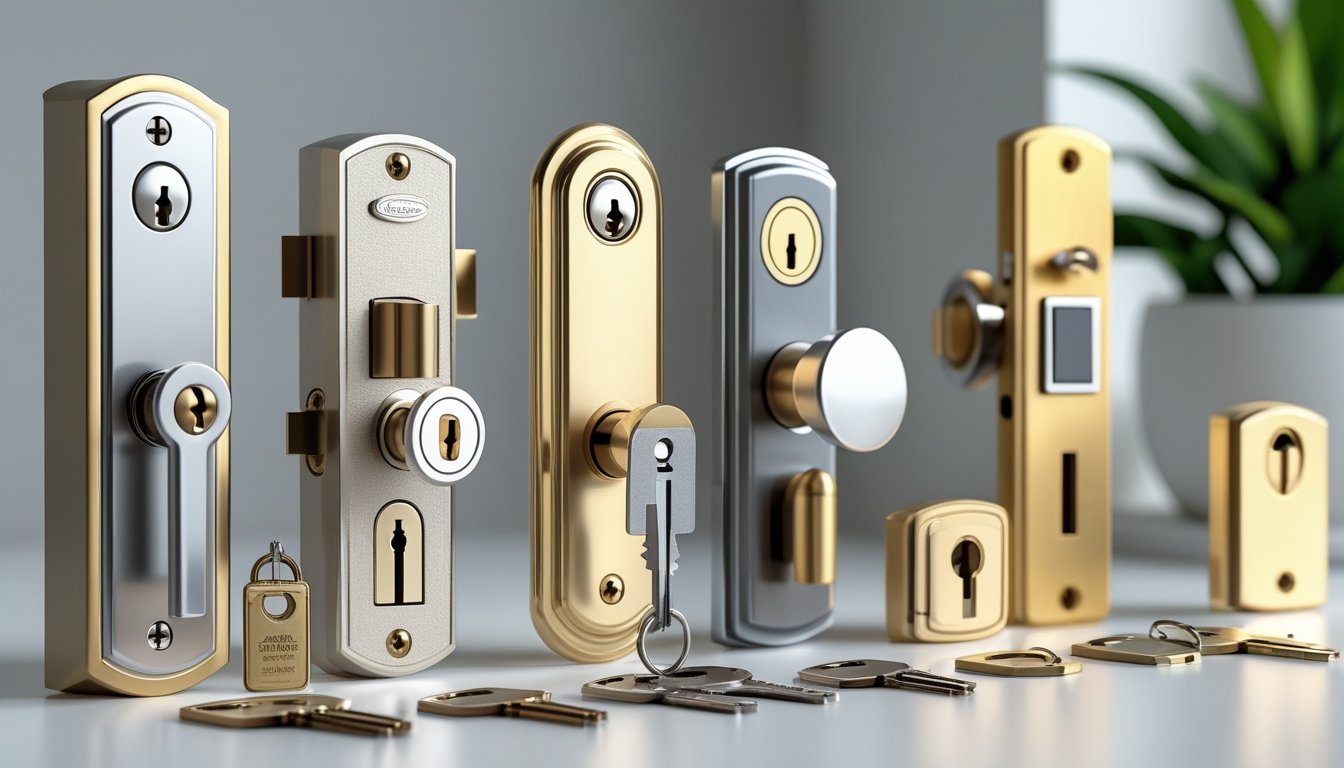Late updated: 06 Nov 2025 15:11
Written by: Elena Prescott
Understanding British Lock Styles and Functions: A Comprehensive Guide
Understanding the various styles and functions of British locks is crucial for enhancing home security and ensuring compliance with insurance requirements. As we explore the intricate world of British lock mechanisms, readers will gain insights into the different types available and their specific uses. Whether you're a homeowner seeking better protection or just curious about how these systems work, the diversity of locks offers both practical and intriguing solutions.

In the UK, lock styles range from traditional mechanical locks to advanced biometric systems, each designed to serve unique security needs. British Standard locks, for instance, are often recommended for their reliability and compliance with home insurance stipulations. By familiarising ourselves with these options, we can make informed decisions that safeguard our homes effectively.
For those new to the subject, this article will unveil crucial aspects of British lock standards and their impact on your property’s safety. We'll address common questions and provide the information needed to choose the right locks, ensuring both peace of mind and insurance validity.
Key Takeaways
- British lock styles include both mechanical and advanced options.
- Understanding lock standards enhances home security and insurance compliance.
- Informed choices about locks can improve property safety.
Key British Lock Styles And Their Functions

In the realm of British locks, understanding the various styles and their functions is essential. Different types such as mortice locks, night latches, and euro cylinder locks each offer unique security features. Recognising their characteristics can enhance home security significantly.
Mortice Locks And British Standard Mortice Locks
Mortice locks are commonly used in the UK for their robustness and are installed within the door itself. A key characteristic is the five-lever mortice deadlock. This type is frequently recommended for external doors due to its security level and resistant stature.
British Standard mortice locks meet specific criteria set by the British Standards Institution. These criteria ensure a high level of security, making them highly recommended by insurance companies. They often boast features to resist drilling and picking.
Sash Locks Versus Deadlocks
Sash locks combine a latch and a bolt mechanism, requiring both a handle and a key to operate. This makes them versatile for many domestic settings. The sash lock offers the advantage of door closure without a key, which is convenient for internal doors.
Deadlocks, on the other hand, utilise a single bolt that is operated by a key from either side. Unlike the sash lock, deadlocks do not have a spring mechanism and are often used alongside other locks for enhanced security, reinforcing external doors effectively.
Night Latches And Yale Locks
Night latches, often referred to as Yale locks, sit on the inside of the door with a mechanism that allows for quick locking. They are widely used for their convenience in securing doors with a simple turn of the knob or key.
Typically, these are fitted on wooden doors. Modern variants, equipped with a deadlocking feature, provide an added layer of security by preventing the latch from being slipped. This makes them reliable for front doors that require frequent access.
Euro Cylinder Locks And Anti-Snap Security
Euro cylinder locks are popular across the UK, especially on composite and uPVC doors. Their modular design makes them easily replaceable, yet this design also exposes them to a technique known as lock snapping.
Installing these locks with anti-snap features, such as those certified by SS312 Diamond, significantly enhances their security profile. These locks are tailored to resist forced entry, making them excellent for external doors needing more advanced protection.
Understanding British Lock Standards And Home Security Requirements

Our focus is on understanding how British lock standards enhance security and fulfil home insurance requirements. We'll look at the role of the British Standards Institution and its Kitemark, delve into specific lock certifications like BS3621, BS8621, and BS10621, and explore the impact of these standards on home insurance.
British Standards Institution And The Kitemark
The British Standards Institution (BSI) is central to ensuring the security of locks in the UK. As the country's national standards body, it establishes rigorous testing procedures for locks. When a lock meets these criteria, it receives a Kitemark—a heart-shaped tick that signifies approval.
This mark is much more than just a logo; it represents a guarantee that the lock has met stringent security standards. For homeowners, this Kitemark is a quick way to identify locks that provide reliable security, making it vital in locking systems for homes. Locks that carry this mark are often required for compliance with insurance policies.
BS3621, BS8621, And BS10621 Lock Certifications
Lock standards are defined by specific certifications. BS3621 is the most recognised standard for mortice and cylinder locks installed on exterior doors. It ensures that locks offer high resistance against picking, drilling, and other forms of forced entry.
BS8621 applies to locks that can be locked from the inside without a key, which is essential for properties needing quick exit capabilities.
BS10621 stands out for multi-point locking systems, addressing additional security needs in modern structures. These standards not only indicate the lock's robustness but also align with insurance prerequisites, making them highly recommended by professional locksmiths.
Home Insurance Implications And Approved Locks
Successfully meeting lock standards can have significant implications for home insurance. Insurance companies often stipulate that only locks with certain certifications like BS3621 are acceptable for coverage. Therefore, using certified locks is crucial for complying with insurance terms, ensuring that your policy remains valid.
Failure to use approved locks can result in policy invalidation. This highlights the importance of consulting with qualified locksmiths to verify that locks meet the required standards. Compliance not only maintains the terms of insurance but also elevates home security effectively.
Choosing locks that adhere to these standards gives homeowners peace of mind and enhances their property's security.
Frequently Asked Questions
British lock styles and functions are varied, each with distinct advantages. From mortice locks to smart locks, each type offers different security benefits. Selection requires understanding unique features, durability, and compliance with security standards.
What are the distinctive features of a mortice lock commonly used in the UK?
Mortice locks are typically fitted into a pocket cut into a door. They are known for providing strong security due to their placement within the door itself. These locks often use a lever mechanism and are commonly approved to British Standard BS3621, essential for securing external doors.
How does a nightlatch function differ from other lock mechanisms?
Nightlatches are surface-mounted locks installed on the inside of a door. They usually have an automatic closing latch, operated from outside with a key and inside with a knob. Unique from mortice locks, nightlatches primarily provide convenience and additional security as a secondary lock on front doors.
Can you explain the security grades of Euro cylinder locks?
Euro cylinder locks are classified by security grades, which indicate their resistance to common attacks like snapping, drilling, or bumping. Grades range from basic to advanced, with higher grades offering enhanced protection. These are often regulated by standards such as BS EN 1303, ensuring compatibility with insurance requirements.
What should one consider when choosing a padlock for outdoor use?
When selecting a padlock for outdoor use, consider weather-resistant materials like stainless steel or brass. Look for features such as shrouded shackles, which provide added resistance against cutting. Ensure the padlock meets relevant security standards and provides protection against rust and corrosion.
In what ways do smart locks provide enhanced security for British homes?
Smart locks offer features like remote access, keyless entry, and integration with home automation systems. Many models come with notifications for locking events, adding an extra layer of security. They also allow for customised access codes, providing control over who enters the home.
What are the benefits of installing a sash jammer on uPVC windows and doors?
Sash jammers add an extra layer of security to uPVC windows and doors by restricting forced entry. They are simple to fit and can be locked from the inside, making them a cost-effective option for enhancing home safety. These devices offer peace of mind, especially in areas prone to break-ins.
